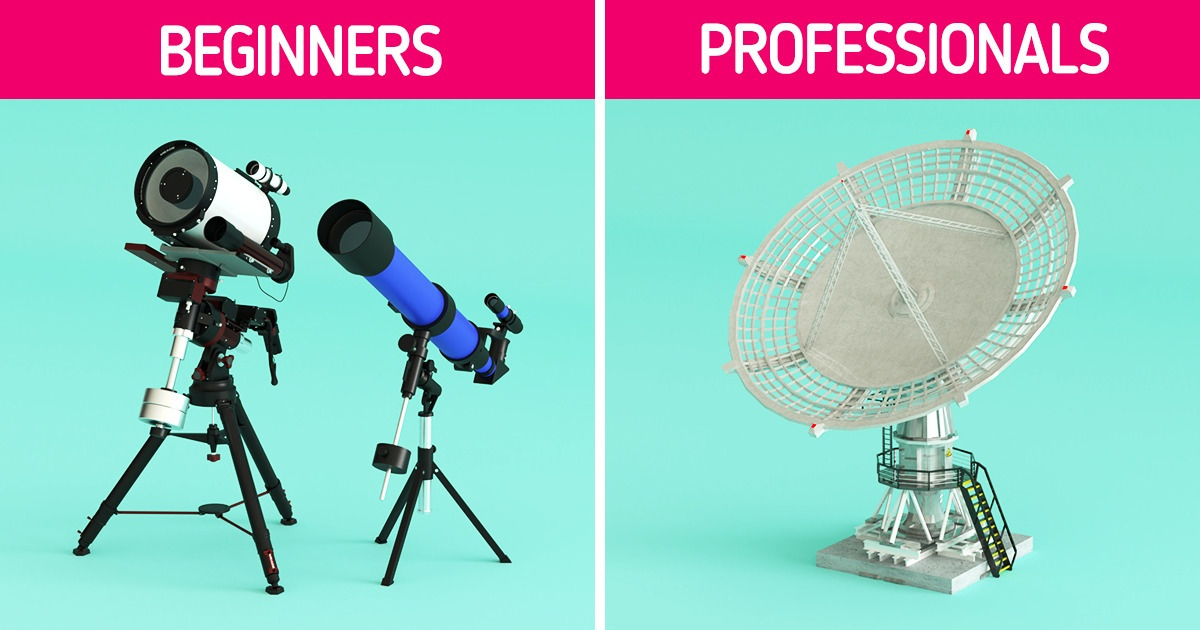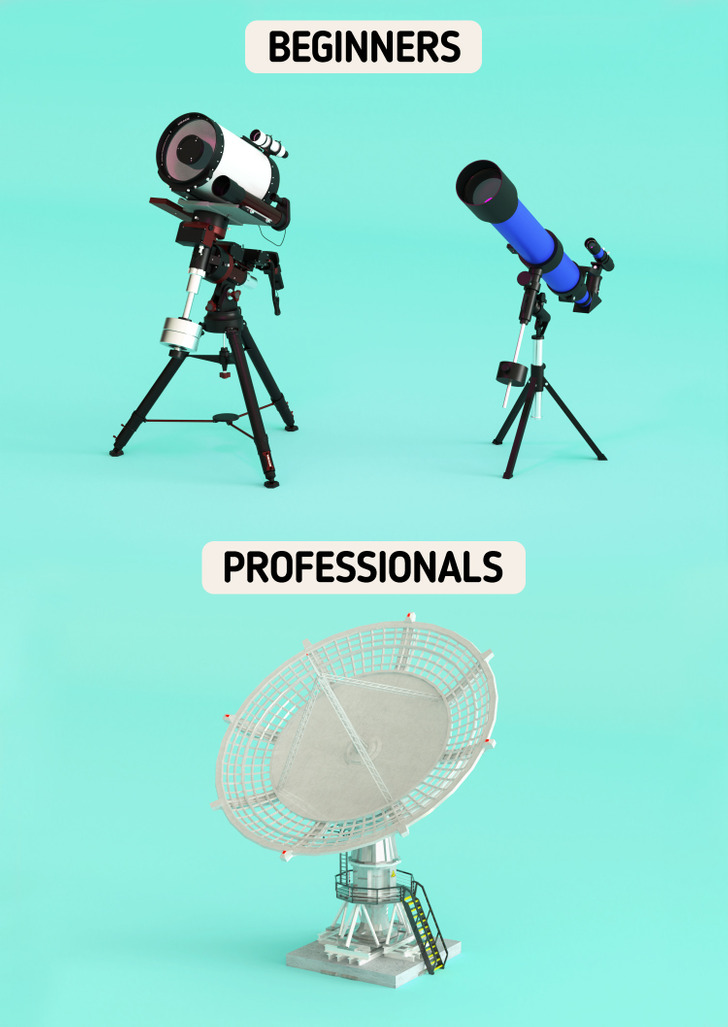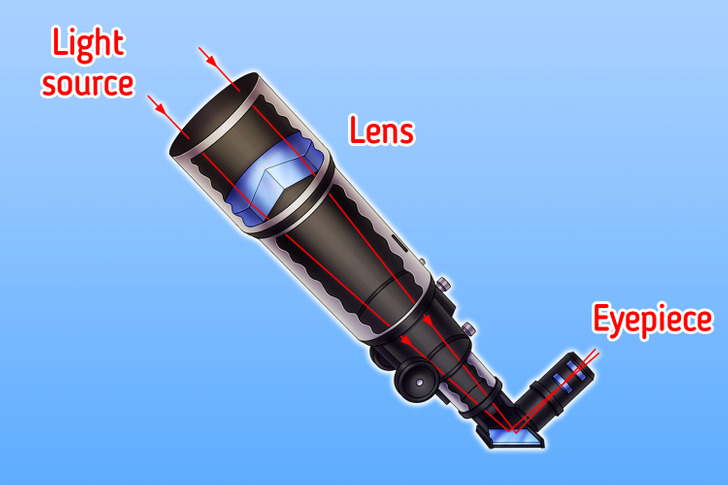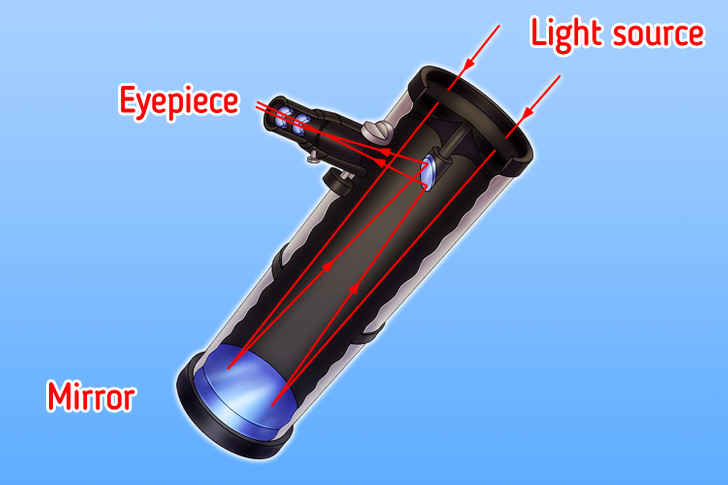A Guide to Types of Telescopes, and How to Choose One for Your Home

People have been using telescopes since 1608, but we don’t know who invented the first one. Today, there are many types of telescopes that let us watch celestial bodies and peer into the universe.
5-Minute Crafts is going to tell you about different types of telescopes and how to choose the right one to use at home.
Types of telescopes

There are several types of telescopes.
- Infrared: They see all objects with a temperature above absolute zero and emit some form of electromagnetic radiation. Such a telescope uses infrared light to detect celestial objects. Infrared light is one of several types of radiation present in the electromagnetic spectrum. The prototype of an infrared telescope was developed in 1961, and its popularity increased in the middle of the 1960s. There are ground-based, airborne, or space telescopes. The latter is the most effective because water vapor in the Earth’s atmosphere absorbs infrared radiation.
- Ultraviolet: They use shorter wavelengths than visible light. Such telescopes can catch the part of the spectrum between the portion seen as visible light and the portion occupied by X-rays. As ultraviolet is invisible to humans and the planet’s atmosphere absorbs most of it, observations at these wavelengths must be performed from the upper atmosphere or from space. Scientists use rockets and satellites.
- X-ray: These telescopes use shorter wavelengths than ultraviolet light. They observe remote objects in the X-ray spectrum. Usually, such telescopes are placed on rockets and satellites to remove the effect of the atmosphere. Special optics collect the X-ray lights for further analysis. The first X-ray telescope was invented in 1963 to observe the sun.
- Radio: They use even longer wavelengths. Such telescopes use an antenna or a radio receiver to detect radio waves from space objects. They look like a parabolic-shaped metal dish or a mash. It reflects the waves to an antenna above the dish. The longer the antenna, the weaker signals it can detect. After that, the amplified signal is processed by a computer to turn the radio signals into an image that follows the shape of the radio emission. Such telescopes can be used at any time of the day.
- Optical telescopes: They gather and focus light mainly from the visible part of the electromagnetic spectrum. There are refracting, reflecting, and catadioptric types. These are the most popular telescopes for beginners, so we’ll tell you more about them.
Optical telescopes

- Refractor: It’s a telescope that uses a lens that gathers light and refracts it. The lens is usually in the front, then there’s a long tube and an eyepiece at the other end where the picture is visible. Refracting telescopes feature technology that has often been applied to other optical devices, such as binoculars and photo lenses.

- Reflector: This is a technology that uses single or several curved mirrors to reflect and focus light. Because all the light rays are parallel to each other, the parabolic shape of the mirror focuses on all of them. Almost all of the major telescopes used in astronomy research are reflectors. They are popular among both beginners and professionals.
- Catadioptric: It combines specifically shaped mirrors and lenses to form an image. It minimizes errors that are present in reflectors and refractors and allows for a wider field of view.
Computerized telescopes
Nowadays, there are many telescopes with computers in them. The main job of the computer is to locate necessary objects. Beginners can find more celestial bodies than they could without it. A computer telescope is also highly recommended if you’re observing amid badly lit, polluted skies. Navigating with a star map is difficult when you can’t see a lot of stars.
There are 2 types of computerized telescopes.
How to choose the right telescope
In order to buy the right telescope, you need to answer several questions and consider the following:
- Decide what objects you want to see: planets, nebulas, or galaxies. Different telescopes are good for different purposes. For example, refractor telescopes are better for views within our own solar system and reflectors are better for deep-sky viewing.
- The bigger the diameter of the objective, the more light it gathers. So, you can see fainter objects in better detail.
- Magnification is not as important as aperture. Aperture determines how much detail you can see, and magnification only zooms the picture but can make it blurry.
- Refractors are more durable, and their optics don’t need to be cleaned as often, which makes them great for home. You can get clearer pictures with them compared with reflectors of the same size. But refractors suffer from an effect called chromatic aberration which is color distortion.
- Reflectors are usually cheaper and don’t have chromatic abberation. You have to clean the optics way more often, and recoat the mirror surfaces with aluminum every 10 to 20 years.
- Catadioptric telescopes are mostly more expensive but they are smaller and give a good view. They are quite powerful, and you can even see galaxies through them. At the same time, they are portable and comfortable for children.
- Computerized telescopes are much more expensive than other kinds. But even if you can afford one, think about how comfortable you are with computers and software that might break.
- If you own a telescope that doesn’t have a computer, you will need more time to locate the objects. It’s harder but way more interesting!
- Consider how convenient it is to move the telescope around the house and whether you need to do it or not. Are you planning to take it somewhere, or will it always be near the same window?
- All telescopes vary in the time it takes to set them up.
- If you’re not sure that you need a telescope, but you still want to watch the sky, try a pair of good binoculars. You can see the lunar craters, star clusters, and some of Jupiter’s satellites.